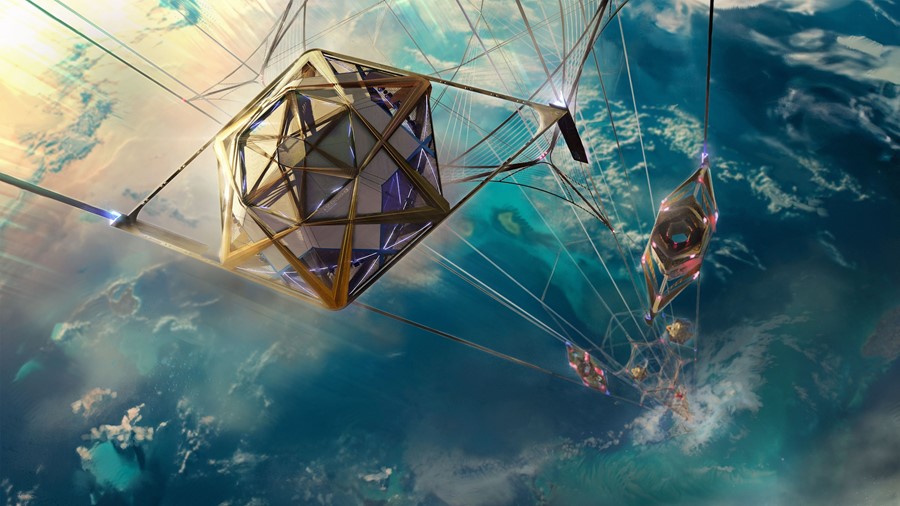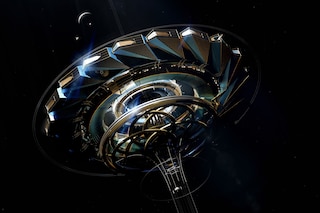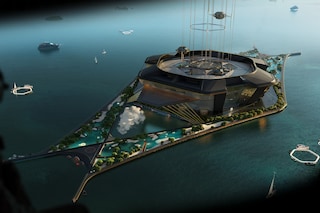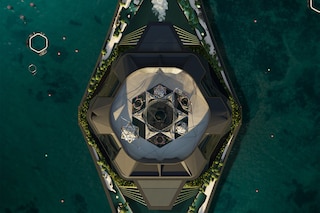The award-winning creator of a sustainable rocket alternative tells Dazed his vision for transporting humanity from the sea to the stars
Humans are obsessed with going into space. Unfortunately, going to space is very expensive and resource-heavy, with rocket launches generating a reported 50 to 75 tonnes of CO2 per passenger, not to mention the steep manufacturing costs. As we expand beyond our measly planet – to settle the moon, mine asteroids, or broaden our search for extraterrestrial life – this doesn’t seem very sustainable, but maybe it doesn’t have to be.
According to Jordan William Hughes, a 30-year-old architect and this year’s winner of the Jacques Rougerie Foundation’s €10,000 award for space-based architecture, rockets might not be the answer at all. Instead, the humans of the future (assuming we stick around that long) might ascend into orbit via “space elevator”.
What is a space elevator, you ask? The concept begins in the realm of science fiction, proposed by the Russian rocket scientist Konstantin Tsiolkovsky in 1895 and subsequently imagined in the likes of Star Trek and the Halo universe. Essentially, it’s a lift composed of a very, very long cable, attached to a counterweight in outer space, that could transport humans or cargo beyond Earth’s atmosphere.
In Hughes’ award-winning version, dubbed Ascensio, the cable would actually be attached to an asteroid captured in geostationary orbit, and slowly lowered down to Earth where it would be tethered to a floating base in the middle of the ocean. From there, drones would travel up and down the cable to strengthen and expand on it, resulting in six elevators – three for humans, with windows and oxygen, and three for transporting cargo.
“It’s essentially a movable space that could avoid hazardous weather on Earth and navigate dangerous space debris in space,” Hughes tells Dazed. Unlike many space tourism projects from the likes of Jeff Bezos’s Blue Origin or Elon Musk’s SpaceX, it would also take people into actual outer space, instead of just slinging them around the planet at high altitude and calling it a day. Specifically, it’s designed to end at around 36,000 kilometres above Earth – for context, the International Space Station orbits at a maximum altitude of ‘just’ 460 kilometres.
As seen in concept art (take a look in the gallery above) both ends of the elevator are also designed with a pleasant experience in mind. “If you’re going to go into space, you should not be staying in an Airbnb,” notes Hughes. “It should be an amazing, once-in-a-lifetime experience.” As such, the base of the elevator is envisioned as a floating island, featuring landscaped parks and other attractions, while space stations on the way up include swimming pools, zero-gravity rooms, and breathtaking views of the Blue Planet.
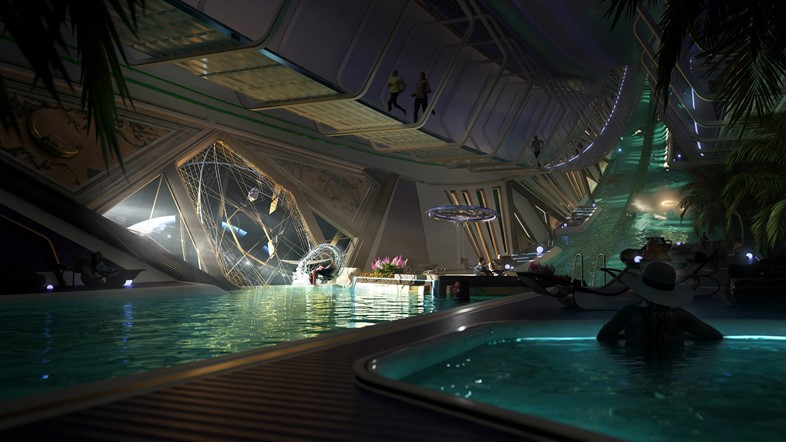
The last stop on the elevator, meanwhile, should be thought of like a “train station... more of a gateway outwards, rather than a final destination”. Floating beyond Earth’s atmosphere, it would act as a launching pad for further space adventures, allowing them to skip the part of the process that consumes the most fuel, and opening up lots of new opportunities. “You’re already in space,” says Hughes. “From that point, you should be able to go anywhere you want.”
Space isn’t for everyone, of course (and we’re not just talking about those with a fear of floating in the dark, infinite void). Time and again, we’ve seen millionaires and billionaires discuss plans to depart for off-world communities, leaving the rest of us behind to choke on their rocket emissions. However, Hughes’ space elevator also aims to make this interstellar inequality a thing of the past. “Currently [to transport something into space] rockets cost millions of dollars per pound,” he explains. “A space elevator, in the long term, should be able to get that down to a few dollars per pound.” Not only would this lower the cost of getting into space – it would also help the elevator justify its huge initial cost, by saving money that would otherwise be spent on building rockets and producing fuel.
Ok, so far this all sounds great, but there’s one big question: will the space elevator actually work? Is it a realistic possibility for surface-to-space travel? According to Hughes, the answer is yes. “This is not a project that was just based around visuals,” he says, of the design that earned him his (second) Jacques Rougerie Foundation award. “I love creating really beautiful images and exciting spaces, that’s what I do, but the competition was very much about research and development... trying to create a holistic design that would actually work.”
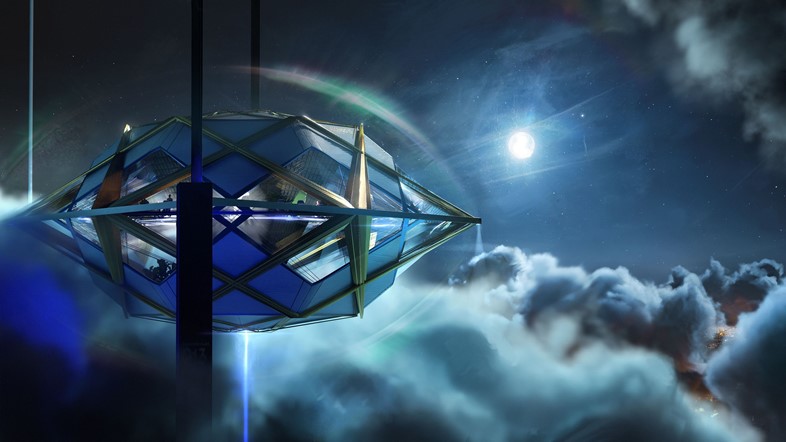
Even so, there are a few roadblocks to overcome, which means that a working space elevator is looking very unlikely within the next decade or so. The “biggest challenge” is the materials science, he adds, which includes finding a material that’s strong and lightweight enough for the all-important cable (you really wouldn’t want it to snap when you’re several thousand kilometres in the air). Luckily, there are already some interesting candidates under development. Obviously, developers would also need to develop safety procedures to ensure that, if a “catastrophe” occurred and the elevator collapsed, most of the cable would float off into space, with the rest falling into a relatively harmless stretch of ocean.
“[The ideas] are far-fetched in the year 2024,” Hughes admits. “I have no disagreement with that, at all. But in terms of mankind looking to the future, I do think it’s realistic. I think it’s necessary.”
On top of the elevator itself, Hughes hopes that its development can inspire new technologies and materials that aid humanity on a shorter timescale, here on Earth. As he notes, this has been a hugely beneficial side-effect of space exploration projects in years gone by. “GPS, satellite, all these things that we take for granted, were [developed] in part because of the space programmes of the past.” Meanwhile, if all goes according to plan, humanity will continue to creep ever closer to its wildest sci-fi dreams.
“I really hope that we get to see some of these amazing pieces of space architecture that we see in science fiction,” Hughes concludes. “But for that to become a reality, we need a different way of doing things. That was the whole driving force.”
